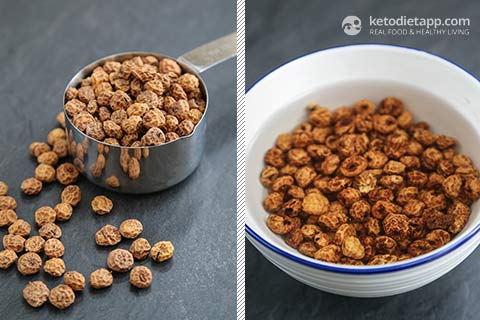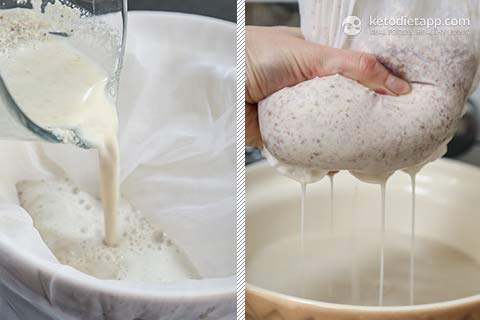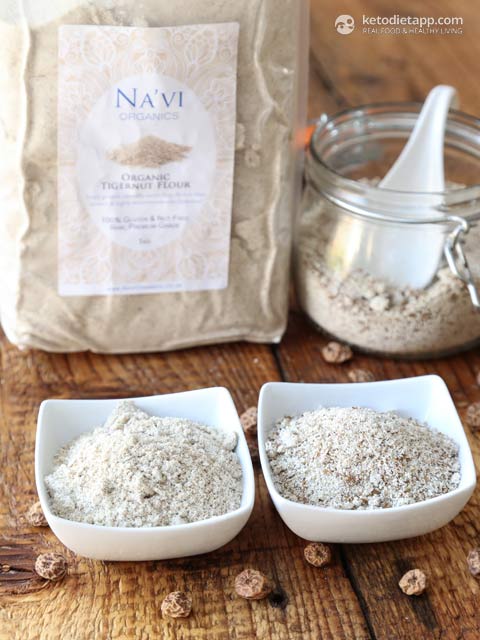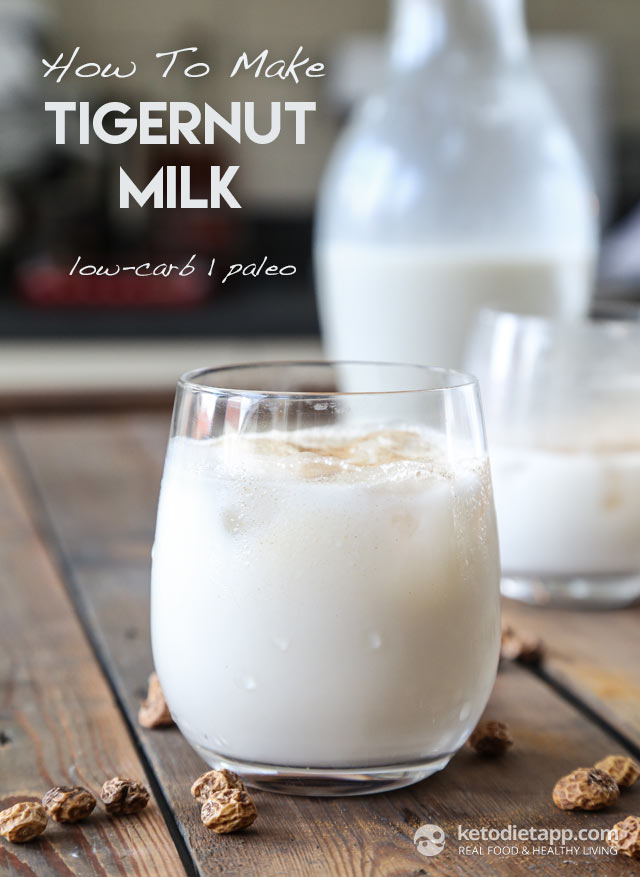Follow us 148.4k
Have you ever heard of tigernuts? I discovered this health food through a post by Lauren of Empowered Sustenance. I was intrigued by their allergy-free nature, sweet taste and nutritional benefits. Don't be fooled by the name, they are actually not nuts, they are a type of vegetable, more specifically a tuber, that has been used by humans for thousands of years.
Tigernuts are perfect for making low-carb, dairy-free milk and you can use the dehydrated pulp as grain-free flour. Because tigernut milk is naturally sweet (more than almond milk), most of you won't need to use any sweeteners. It's simply delicious!
Just like keto-friendly macadamia nuts, they are high in heart-healthy monounsaturated fats. They are a great source of resistant starch, a prebiotic fibre that resists digestion and feeds the good bacteria in our gut. Because they have an impact on digestion, you should introduce them gradually so that your digestion tract can adjust. You may want to start with quarter-half a cup before you get used to them.
How about tigernut flour? There is a difference between regular store-bought tigernut flour and homemade tigernut meal/flour that is made from the leftover dehydrated pulp.
- Homemade tigernut flour is made with leftover pulp when making low-carb milk. The flour contains less carbs (less than 1 g of net carbs per tablespoon). In fact, most of it is just fibre. The texture is light and airy.
- Store-bought tigernut flour is made from ground tigernuts and contains more carbs. The texture is fine and more dense. It's also distinctively sweeter compared to the homemade version where most of the carbs end up in the milk. A tablespoon of tigernut flour contains almost 3 grams of net carbs. So, unless you use small quantities, I wouldn't recommend it for a very low-carb, ketogenic diet.
I'm still new to tigernuts, so I'm planning to use tigernut flour in my recipes and see how it works.
Hands-on Overall
Serving size 1/2 cup/ 120 ml
Nutritional values (per serving, 1/2 cup/ 120 ml)
Net carbs3.1 grams
Protein0.5 grams
Fat2.2 grams
Calories35 kcal
Calories from carbs 36%, protein 5%, fat 59%
Total carbs3.9 gramsFiber0.8 gramsSugars1.4 gramsSaturated fat0.4 gramsSodium1 mg(0% RDA)Magnesium8 mg(2% RDA)Potassium64 mg(3% EMR)
Ingredients (makes about 4 cups/ 960 ml)
- 1 cup tigernuts (150 g/ 5.3 oz)
- 4 cups hot water (1 l) + more lukewarm water for soaking
Optional Flavouring (use either):
Instructions
- Place the tigernuts in water and let them soak for 24 hours.

- After 24 hours, drain and place in a blender (I used my Kenwood mixer with a blender attachment). Add a small amount of water, about 1/2 cup. Blend the mixture on high for 2-3 minutes.

- Add more water if the mixture is too dry and sticks to the sides. Then, pour in the remaining water and blend for another minute. Let it sit for 10-15 minutes.

- Pour the mixture through a nut milk bag or a fine mesh sieve lined with cheesecloth, into a bowl. Strain the mixture through the nut milk bag. Using your hands, squeeze out as much milk as possible (be careful, the mixture can still be hot inside).
- When done, optionally add any flavouring and pour in a container or a bottle. Refrigerate and use within 3 days. If you want to store it for longer, freeze in batches.

- Don't waste the tigernut pulp use it to make tigernut flour. Before you store it, you will have to dehydrate the tigernut pulp.
- Preheat the oven to 70-80 °C/ 160-175 °F. Spread the pulp over a large baking tray and place in the oven. Dehydrate for 4-6 hours or until dry. Mix a few times during the dehydration process. Otherwise, let it dry on a warm sunny spot in your kitchen and mix a few times.
- Once it's dry (not browned), place it in a food processor and pulse until powdered (I use this Kenwood mixer with a food processor attachment).

- Below is a comparison of store-bought tigernut flour (left) and homemade tigernut flour/meal (right). The homemade version is not as fine as store-bough tigernut flour but has has less carbs - most of it is just fibre. That's because store-bought tigernut flour is made with pure ground tigernuts while my homemade version is just the leftover from making tigernut milk.

Ingredient nutritional breakdown (per serving, 1/2 cup/ 120 ml)
| Net carbs | Protein | Fat | Calories |
|---|
| Tigernut milk, unsweetened |
| 3.1 g | 0.5 g | 2.2 g | 35 kcal |
| Total per serving, 1/2 cup/ 120 ml |
| 3.1 g | 0.5 g | 2.2 g | 35 kcal |
 Follow us 148.4k
Follow us 148.4k
Do you like this recipe? Share it with your friends!
Let us know what you think, rate this recipe!
